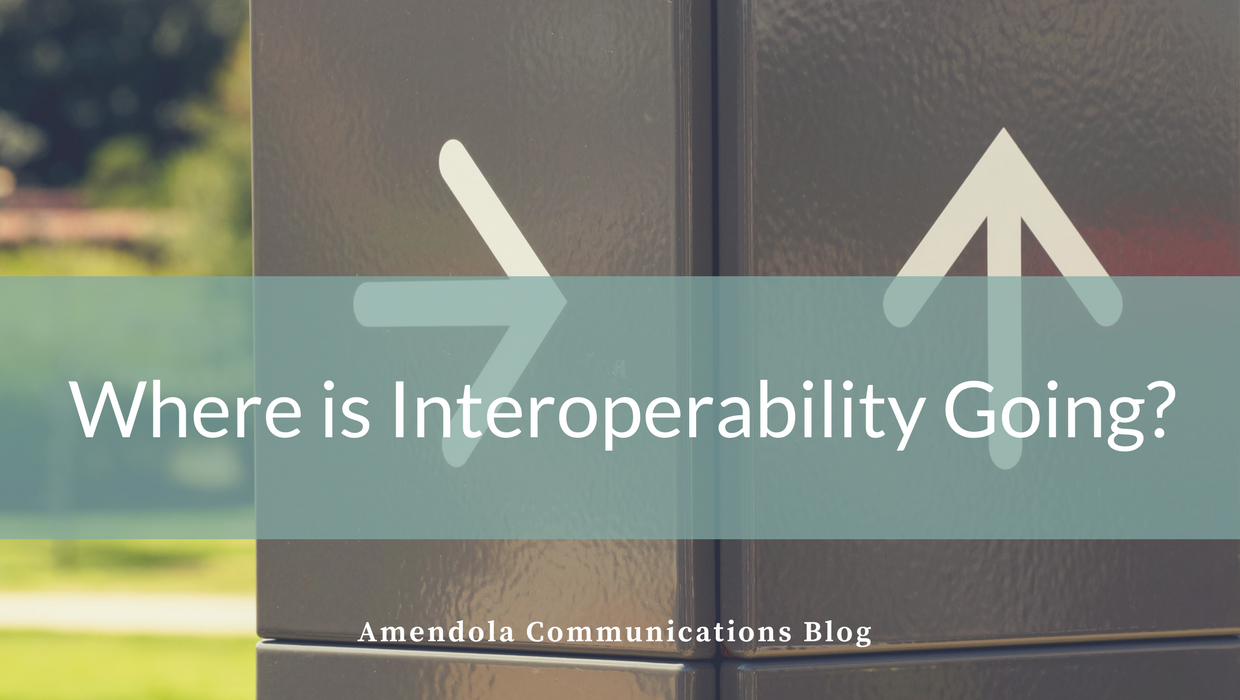When health IT professionals head to HIMSS, interoperability will be a major issue, as it has been for many years. Various interoperability solutions are always on the horizon, but never quite come to fruition. The reasons go beyond technological capabilities; healthcare organizations and IT vendors have simply not been able to think outside the box of their preconceived notions.
A classic example is the recent announcement by a very large EHR vendor of new enhancements to its interoperability solution that allow providers who use that EHR to collaborate across organizational boundaries. Now, it’s all to the good that a clinician in one healthcare system will be able to not only view patient data in a different system’s EHR, but will also be able to schedule appointments more efficiently and message providers in the other healthcare system about a particular patient.
However, a user of that EHR will still not know that a patient got a flu shot at CVS or was admitted to a hospital ED that doesn’t have that EHR. In fact, except for the exchange of hard-to-parse clinical summary documents, the provider won’t know about anything that happened to the patient in care settings with disparate EHRs.
The central problem here is that the major health IT vendors would like their customers to use only their products and no one else’s. They’ve managed to convince some organizations that “rip and replace” is the solution to their interoperability ills. It is, however, no panacea. Aside from being a very expensive approach that disrupts the organization for a year or more, a unity system cannot provide all the functionality that healthcare organizations need, and the big vendors are not very amenable to connecting with third party app vendors.
The advent of Fast Healthcare Interoperability Resources (FHIR) promises to allow EHR users to expand their functionality through third party apps without having to pay for special interfaces. To their credit, the big vendors have shown some flexibility by letting outside vendors play in their digital sandboxes and develop FHIR-based apps. However, the majority of these apps are being used mainly for viewing EHR data. Moreover, FHIR has still not solved the problem of EHR-to-EHR interoperability.
So what is to be done? I’d suggest that, for starters, ONC and the private consortia working on interoperability consider a different role for EHRs that was suggested by Mandl and Kohane in a New England Journal of Medicine article. In that piece, the authors predict that with the spread of open standard software APIs, EHRs might become commodity components in a larger platform that includes other transactional systems and data warehouses running myriad apps. These apps could have access to many sources of shared data beyond a single health system’s records.
To visualize what this means, think about all the apps you have on your smartphone. Many of these apps work together. For example, Uber uses your GPS to figure out your location, as do shopping and movie apps. Your calendar app knows what time it is in your time zone.
If an EHR could contextualize all of the data coming into it from different apps, and combine them in ways that support medical decision making, it would be a much more useful program. It would maintain its role as the center of clinical workflow and documentation, but outside apps could also improve those functions, making the EHR more usable for clinicians.
That’s all very fine, and the same system might be used to expose EHR data to apps that consumers could use to monitor and maintain their health. But how do we achieve interoperability between EHRs?
I don’t presume to have the answer, but I have a couple of suggestions. First, health information exchanges need to step up their efforts to link together healthcare providers that use different EHRs. Some HIEs have focused on providing more analytic support to customers, which is certainly important but doesn’t meet the need to make a broad range of outside data available within the EHR workflow. To the extent that HIEs expand the types of data they can exchange, they will become more valuable. And if they adopt the emerging FHIR-based APIs, they will eventually find ways to exchange relevant data at the granular data level.
Interoperability at a granular, discrete data level must move beyond interfaces between disparate systems, which are too expensive to set up and maintain. The holy grail would be to develop the ability for EHRs to generate some kind of standard data set far more extensive than today’s CCDAs that would be both machine readable and understandable to clinicians using any other system. Perhaps FHIR could do that someday, but it would still require some kind of universal network to distribute the data. Maybe blockchain or some other secure peer-to-peer system will meet this challenge.
That’s all my crystal ball shows me today. But if the past is any indication, something totally unknown lies outside the box of the future.
